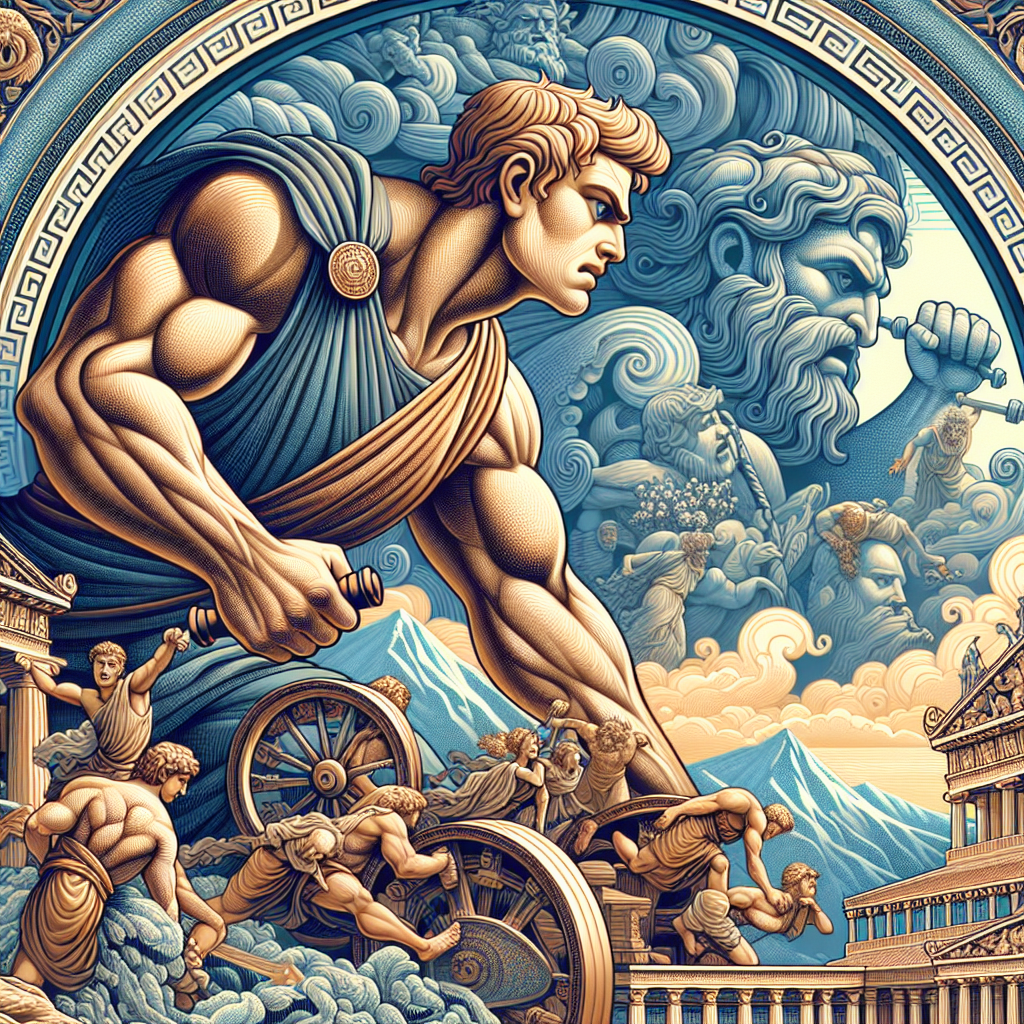In the rich tapestry of Greek mythology, few figures stand out as prominently as Hercules. Known for his incredible strength, courage, and enduring spirit, Hercules embodies the archetype of the hero. His stories resonate through the ages, captivating audiences with tales of triumph and tragedy, valor and vulnerability. Central to his mythos are the legendary Twelve Labors, a series of seemingly insurmountable tasks that tested his resolve, integrity, and sheer willpower.
Origins of Hercules
Hercules, or Heracles in Greek mythology, was the son of Zeus, the king of the gods, and Alcmene, a mortal woman. His very birth, however, was fraught with complications. Hera, Zeus’s wife and the goddess of marriage, was jealous of Alcmene and sought to punish the child born of her husband’s infidelity. From an early age, Hercules was marked by destiny, facing adversities that would shape his identity as a hero.
One of his most notable trials came in the form of madness, inflicted upon him by Hera. In a fit of rage, he killed his wife and children, a horrific act that left him in despair. Seeking redemption, Hercules consulted the Oracle of Delphi, who instructed him to serve King Eurystheus of Tiryns for twelve years and complete a series of labors.
The Twelve Labors
Hercules’s Twelve Labors were not merely a punishment; they were transformative challenges that allowed him to prove his heroism and strength. Each labor was designed to be more daunting than the last, pushing Hercules to his limits. Below are the Labors that define his legacy:
-
The Nemean Lion: Hercules’s first labor was to slay the fearsome Nemean Lion, a creature with impenetrable skin. After grappling with the lion, he discovered that his weapons were ineffective. Using his immense strength, he ultimately strangled the beast and wore its skin as armor, symbolizing his conquest over seemingly indestructible foes.
-
The Lernaean Hydra: The second labor involved battling the multi-headed serpent known as the Hydra. For each head Hercules severed, two more would grow back. With the assistance of his nephew Iolaus, Hercules burned the neck stumps, preventing the heads from regenerating. This labor represented the challenges of facing seemingly endless obstacles.
-
The Ceryneian Hind: Hercules was tasked with capturing the sacred golden hind of Artemis. The hind was incredibly swift and elusive. After a year of pursuit, Hercules captured it without harming it, demonstrating his skill and restraint.
-
The Erymanthian Boar: The fourth labor required Hercules to capture a giant boar alive. Utilizing his cunning, he trapped the beast in deep snow and brought it back to Eurystheus, who was terrified and hid in a jar at the sight of the creature.
-
The Augean Stables: This labor required Hercules to clean the stables of King Augeas, which had not been cleaned in years. Instead of wrestling with the filth, Hercules diverted two rivers to wash out the stables, showcasing his ingenuity and resourcefulness.
-
The Stymphalian Birds: Tasked with defeating man-eating birds with metallic beaks, Hercules used a rattle given to him by Athena to scare them into the air before shooting them down with arrows.
-
The Cretan Bull: Hercules captured the bull that ravaged Crete and brought it back alive. The bull became a symbol of his triumph over chaos and destruction.
-
The Mares of Diomedes: The eighth labor involved defeating Diomedes, a king who fed his horses human flesh. Hercules tamed the mares and brought them back, showcasing his strength and dominance even over beasts.
-
The Girdle of Hippolyta: To obtain the girdle of Hippolyta, the queen of the Amazons, Hercules initially sought it peacefully. However, a misunderstanding led to a battle, forcing him to fight and take the girdle, highlighting the theme of conflict in human relationships.
-
The Cattle of Geryon: Hercules traveled to the end of the world to retrieve the cattle of the three-bodied Geryon. After confronting various challenges, including battling the two-headed dog Orthrus, Hercules brought the cattle back with great bravery.
-
The Apples of the Hesperides: Perhaps one of the most mystical tasks, Hercules had to fetch the golden apples guarded by a dragon. He cleverly persuaded Atlas, the titan, to retrieve the apples for him while he held the heavens, demonstrating wit along with strength.
-
The Capture of Cerberus: The final labor involved descending into the Underworld and capturing Cerberus, the three-headed guard dog. Hercules achieved this without weapons, relying on his sheer might and bravery to subdue the beast and bring him back to the surface, symbolizing his triumph over death.
Legacy and Interpretation
Hercules’s Twelve Labors encapsulate a wide range of human experiences—from the struggle against fate to the pursuit of redemption. Each labor serves as an allegorical tale about confronting one’s inner demons, overcoming external challenges, and continuously striving for greatness despite insurmountable odds.
Throughout history, Hercules has transcended myth, becoming a cultural icon. In art, literature, and popular culture, he represents the ideal hero, one who grapples with human flaws while achieving extraordinary feats. His labors are often interpreted as a metaphor for personal growth, illustrating that true heroism lies not just in strength, but in resilience, adaptability, and moral integrity.
Conclusion
Hercules remains a timeless symbol of strength and virtue, his Twelve Labors a poignant reminder of the struggles inherent in the human condition. As we reflect on his journey, we find inspiration in the notion that true heroism is not merely defined by physical prowess, but by the courage to face one’s demons, the perseverance to rise from one’s failures, and the grace to learn from each experience. In a world where challenges and adversities are omnipresent, the legacy of Hercules reminds us all to embrace our own labors with courage and determination.






